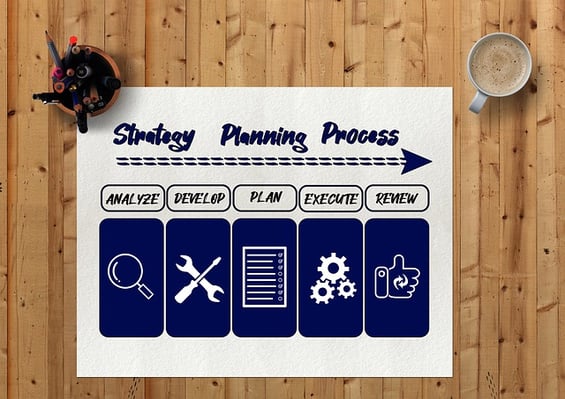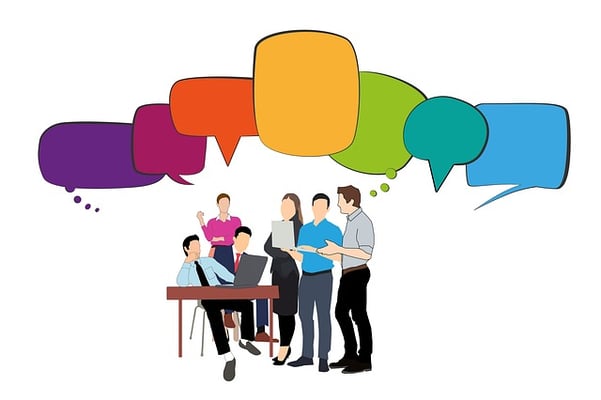How do you ensure that your organization grows and changes in a way that maximizes productivity and profitability? It’s a question every business leader faces. Unfortunately, rather than taking a strategic approach to this, many leave it up to chance.
It’s easy to see why. Busy leaders often spend their time fighting fires and taking on the daily tasks of keeping things going. They never get around to creating an organizational development strategy.
A successful business needs a clear organizational development plan. Chances are that your company is already implementing some aspects of organizational strategy. That’s the good news. Now it’s just a matter of building on that to create an organizational development plan.
What is Organizational Development?
The definition of organizational development can vary and will largely depend on each organization’s goals.
For example, a non-profit organization may be focused on better delivery of services and ensuring they are targeting the right populations. An investment firm may be focused on acquiring customers with investable income above a certain amount and improving the results they get for those clients.

Organizational development is about taking a controlled, strategic approach to growth and change that allows you to meet the goals you have set for your company.
While details vary, organizational development has some shared characteristics from one business to another.
Organizational development leads to significant changes
Organizational development (OD) ultimately leads to changes that impact roles, teams, departments, and the entire organization.
Organizational development is flexible
OD strategies will evolve and change. They are built on the understanding that internal and external factors impact what will and will not work. As new data is revealed, leaders can adjust the plan.
Organizational development improves agility and effectiveness
Whatever an organization’s goals are, a strong organizational development strategy will help it to be more effective in accomplishing them. Additionally, with an OD plan in place, companies will be able to react to changes and opportunities.
The role of HR in organizational development
The human resources department plays an integral role in organizational development. In fact, this is the team that is responsible for much of the process of creating, executing, and refining this strategy.
Executive leadership may set the company’s goals, but the HR team is largely in charge of developing the organizational structures and relationships that ensure those goals are met.
It’s important to understand that organizational development is something that occurs on a daily basis. It isn’t some monolithic task that happens once. It is ongoing in the daily tasks of managing human resources.
For example, an HR team may adopt a new methodology for conducting assessments to determine training needs. As part of an organizational development strategy, that methodology must take into consideration the evolving needs of different business areas that are working toward the objectives that leadership has set.
Further, HR must be able to convince the rest of the company that new systems and processes as well as evolving roles will:
- Help other business areas operate more efficiently
- Put the organization in a better position to succeed
- Give individual employees more opportunities to achieve

The HR team can benefit significantly from collecting feedback from other teams after implementing new systems and processes. Then they can use this information to improve how changes are made in the future.
Popular organizational development models
There are several OD models that businesses implement to help ensure better growth while also improving efficiency and productivity. However, it’s important to understand that no model will work perfectly for any organization without some adjustments.
Choosing a model with a clear understanding of your organization and its needs is important. Avoid selecting an organizational development model simply because it worked well for another brand.
Also, remember that an organizational model that works with your company’s current set of challenges may not be effective for future obstacles.
The truth is that organizational development strategies can help businesses solve current problems and take advantage of opportunities that exist today. At the same time, the growth and success this creates will eventually lead to new challenges. When this happens, businesses often need to adopt new models.
The following OD models are worth understanding.
Larry Greiner’s Model
Larry Greiner's model is based on the belief that change happens when external pressures influence management. The process goes as follows:
- An outside factor exerts pressure on executive leadership
- Time and resources are invested in identifying the problem
- The solution is created
- The positive results that the organization experiences reinforce new habits
This model assumes that growth is largely a function of the age of an organization.
Lewin’s Model
The central concept behind Lewin’s model is that change is only successful when the organization is motivated and prepared for it to happen. This is described as a process of unfreezing, changing, and refreezing.
Unfreezing involves helping individuals unlearn behaviors that are no longer serving them. It prepares them to engage in disruptive change. The goal is to eliminate resistance to change and help people view change as a positive.
Changing is the process of implementing new habits, systems, structures, roles, etc. It’s also embracing new attitudes and views.
Refreezing is taking those new changes and turning them into the status quo. Organizations must reinforce new ways of doing things until they become standardized.
Leavitt’s Model
Leavitt’s model assumes that the people, responsibilities, technologies, duties, and structure that define an organization are interconnected. So changes or triggers that impact one area will inevitably impact all others. It’s imperative to consider the implications of a change across all business areas before implementing it.
Understanding the 5 stages of OD
No matter which model you choose to solve your organizational challenges, you will go through five stages while implementing them. These are:
- Recognizing the need for organizational change
- Diagnosing and articulating the problem
- Finding and implementing a solution
- Evaluating the changes that were made
- Fully integrating changes into the business model
Each of these five stages can be executed successfully if team members have access to tools that allow them to gain a better understanding of the current organizational structure and map out plans for new structures. The right org chart software can help HR teams provide these tools.
Read more topics on organizational design.





